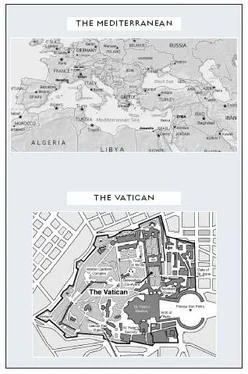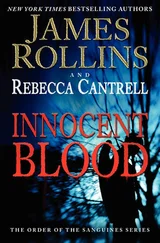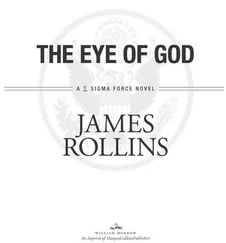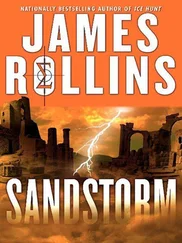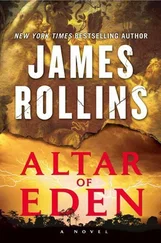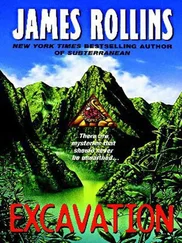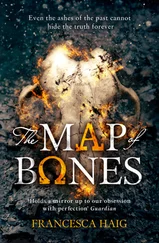Perhaps the same could be said for being a leader.
“Okay, enough with hitting the books,” he said, drawing Kat’s eyes. He glanced to Monk. “And I think you’ve explored the depth of this flying liquor cabinet long enough.”
Monk shrugged and came around into the main cabin area.
“We have less than four hours of flight time,” Gray said. With their jet, a custom Citation X, traveling just under sonic speeds, they would be landing at two A.M. German time, the dead of night. “I suggest we all try to get some sleep. We’ll be hitting the ground running once we’re there.”
Monk yawned. “You don’t have to tell me twice, Commander.”
“But first let’s compare notes. We’ve had a lot thrown at us.”
Gray pointed to the seats. Monk dropped into one. Gray joined them, facing Kat across a table.
While Gray had known Monk since joining Sigma, Captain Kathryn Bryant remained a relative unknown. She was so steeped in study that few at Sigma knew her well. She was mostly defined by her reputation since being recruited. One operative described her as a walking computer. But her reputation was also clouded by her former role as an intelligence operative. Overseeing black ops, it was rumored. But no one knew for sure. Her past was beyond the classification of even her fellow Sigma members. Such secrecy only isolated her further from men and women who had risen through the ranks in units, teams, and platoons.
Gray had his own problems with her past. He had personal reasons for disliking those in the intelligence field. They operated aloof, far from the battlefield, farther than even bomber pilots, but more deadly. Gray bore blood on his hands because of poor intel. Innocent blood. He could not shake a certain level of distrust.
He stared at Kat. Her green eyes were hard. Her whole body seemed starched. He pushed aside her past. She was his teammate now.
He took a deep breath. He was her leader.
Act the part…
He cleared his throat. Time to get to business. He lifted one finger. “Okay, first, what do we know?”
Monk answered, his face dead serious. “Not much.”
Kat maintained a fixed expression. “We know the perpetrators are somehow involved with the cult society known as the Royal Dragon Court.”
“That’s as good as saying they’re involved with Hari Krishnas,” Monk countered. “The group is as shadowy and weedy as crabgrass. We don’t have a clue who is truly behind all this.”
Gray nodded. They had been faxed this information while en route. But more disturbingly, news had reached them of an attack upon their counterparts in the Vatican. It had to be the work of the Dragon Court again. But why? What sort of clandestine war zone were they flying into? He needed answers.
“Let’s break this down then,” Gray said, realizing he sounded like Director Crowe. The other two looked at him expectantly. He cleared his throat. “Back to the basics. Means, motive, and opportunity.”
“They had plenty of opportunity,” Monk said. “Striking after midnight. When the streets were mostly empty. But why not wait until the cathedral was empty, too?”
“To send a message,” Kat answered. “A blow against the Catholic Church.”
“We can’t make that assumption,” Monk said. “Look at it more broadly. Maybe it was all sleight of hand. Meant to misdirect. To commit a crime so bloody that all attention would be pulled from the rather insignificant theft of some dusty bones.”
Kat didn’t look convinced, but she was difficult to read, playing her cards close to the chest. Like she had been trained.
Gray settled the matter. “Either way, for now, exploring opportunity offers no inroads into who perpetrated the massacre. Let’s move on to motive.”
“Why steal bones?” Monk said with a shake of his head and sat back. “Maybe they mean to ransom them back to the Catholic Church.”
Kat shook her head. “If it was only money, they would’ve stolen the golden reliquary. So it must be something else about the bones. Something we have no clue about. So maybe it’s best we leave that thread to our Vatican contacts.”
Gray frowned. He was still uncomfortable working jointly with an organization like the Vatican, an establishment built on secrets and religious dogma. He had been raised Roman Catholic, and while he still felt strong stirrings of faith, he had also studied other religions and philosophies: Buddhism, Taoism, Judaism. He had learned much, but he never could answer one question from his studies: What was he seeking?
Gray shook his head. “For now, we’ll mark the motivation for this crime with another big question mark. We’ll pursue that in more depth when we meet with the others. That leaves only means to discuss.”
“Which goes back to the whole financial discussion,” Monk said. “This operation was well planned and swiftly executed. From the manpower alone, this was an expensive operation. Money backed this theft.”
“Money and a level of technology that we don’t understand,” Kat said.
Monk nodded. “But what about that weird gold in the Communion bread?”
“Monatomic gold,” Kat mumbled, creasing lines around her lips.
Gray pictured the gold-plated electrode. They had been given reams of data in their dossier on this strange gold, culled from labs around the world: British Aerospace, Argonne National Laboratories, Boeing Labs in Seattle, the Niels Bohr Institute in Copenhagen.
The powder had not been ordinary gold dust, the flaky form of metallic gold. It had been an entirely new elemental state of gold, classified as m-state . Rather than its usual metallic matrix, the white powder was gold broken down into individual atoms. Monatomic, or m-state. Until recently, scientists had no idea that gold could transmute, both naturally and artificially, into an inert white powder form.
But what did it all mean?
“Okay,” Gray said, “we’ve all read the files. Let’s round-robin that topic. See if it leads anywhere.”
Monk spoke up. “First, it’s not just gold that does this. We should keep that in mind. It seems any of the transitional metals on the periodic table — platinum, rhodium, iridium, and others — can also dissolve into a powder.”
“Not dissolve,” Kat said. She glanced down to the dossier with its photocopied articles from Platinum Metals Review, Scientific American, even Jane’s Defense Weekly, the journal of the UK’s Ministry of Defense. It appeared as if she itched to open the folder.
“The term is disaggregate ,” she continued. “These m-state metals break down into both individual atoms and microclusters. From a physics standpoint, this state arises when time-forward and time-reverse electrons fuse around the nucleus of the atom, causing each atom to lose its chemical reactivity to its neighbor.”
“You mean they stop sticking to each other.” Monk’s eyes danced a bit with amusement.
“To put it crudely,” Kat said with a sigh. “It’s this lack of chemical reactivity that makes the metal lose its metallic appearance and disaggregate into a powder. A powder undetectable to ordinary lab equipment.”
“Ah…” Monk muttered.
Gray frowned at Monk. He shrugged. Gray knew his friend was playing dumb.
“I think,” Kat went on, oblivious of the exchange, “that the perpetrators knew about this lack of chemical reactivity and trusted the gold powder would never be discovered. It was their second mistake.”
“Their second?” Monk asked.
“They left alive a witness. The young man. Jason Pendleton.” Kat opened her dossier folder. It seemed she couldn’t resist the temptation after all. “Back to the matter of the gold. What about this one paper on superconductivity?”
Читать дальше
